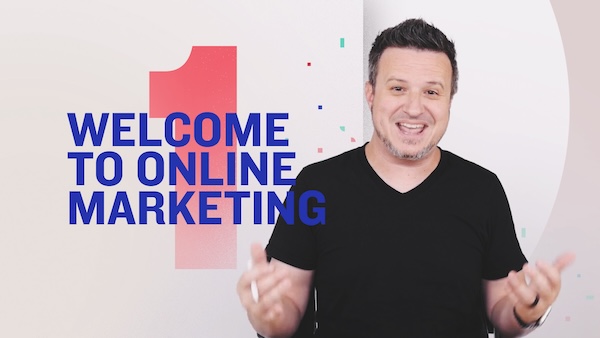How do you create an online course… and then sell it? You need to get these questions answered because you need to begin generating money with what you know — not what you do.
Before we go any further, you should be applauded for being bold enough to even think the thought, “I have something that other people need.” You may feel unqualified to teach a course. You may feel like you don’t know anything special, or even doubting that anyone would purchase anything from you.
All of these inner monologue thoughts are not unique to you. Everyone has them… EVERYONE (even Brad Pitt).
You will always be your own worst critic when it comes to creating and putting something new into the world… whether it is a course, a thought, or even an artistic expression. You know what you want to communicate and when that expression is forced to take a communicative form, you become frustrated because it’s not as ideal in reality as it is in your head.
If you’re reading this, chances are you have been presented with an offer to purchase an online course. The person selling that online course has gone up against the same mental battles you are facing and, while some may be more difficult than others, they have fought through and defeated self doubt… just like you will!

The world of online courses may appear to be an over saturated market, and in fact it is.
So if it’s an over saturated market, is it worth even creating your course and trying to sell it?
Absolutely. But why? It’s simple.
The reason the online course world is over saturated is because there is a lot to learn and people learn differently. For every person that buys a course from one of the online gurus, there is another person who doesn’t quite jive with that guru’s vibe and, therefore, can’t really get the benefit of the content.
This is where you come in.
Your course is not meant for everyone. Your teaching style won’t connect with everyone. The skills you teach won’t be seen as valuable to everyone. And all of this is a good thing.
It means, there IS someone who you will connect with through your teaching style. There IS someone who will see the value in what you have to teach. There IS someone who will connect with your way, your method, your teaching.
And therein lies your opportunity — not just to make life-changing revenue, but also to make the world a better place for those who use what you teach to create transformation in their own lives.
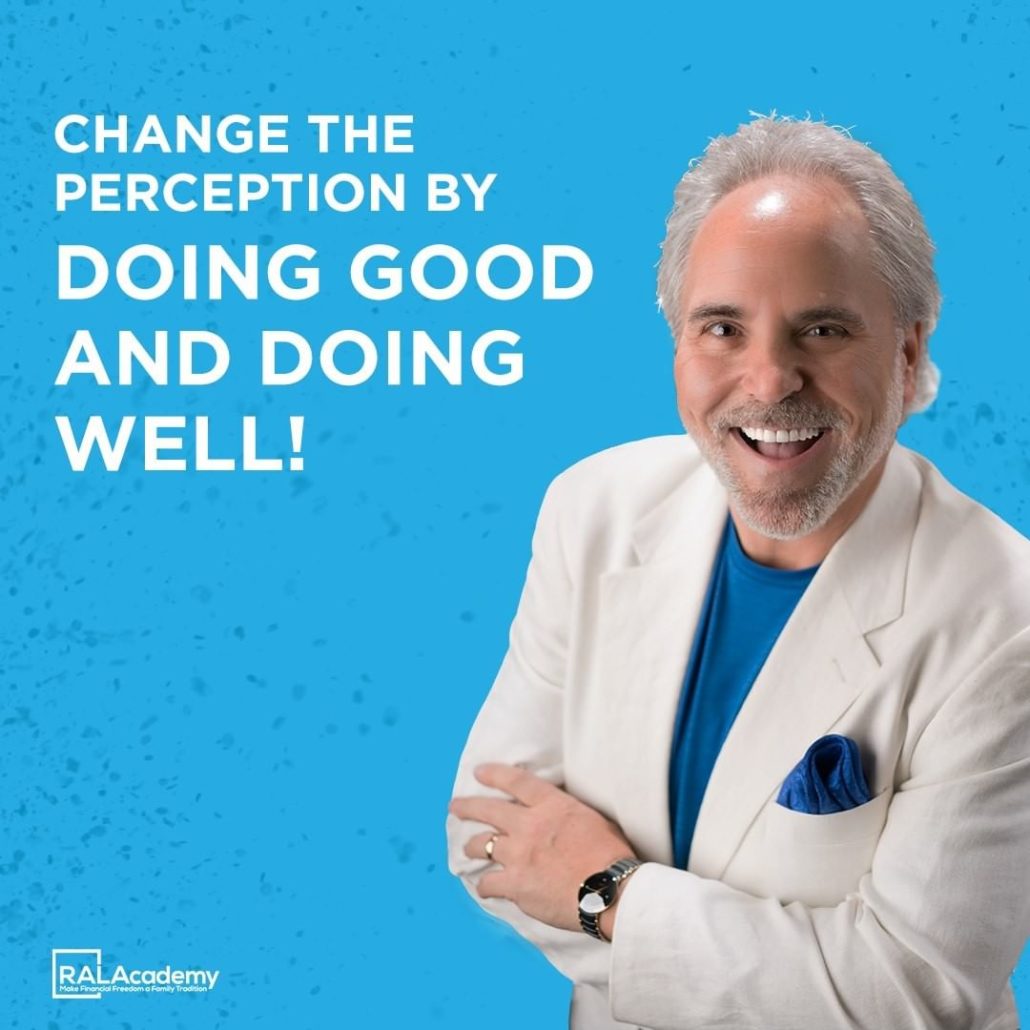

The Online Courses I Have Created
My first course, released in 2014, has just over $800 in sales.
My second course, released in 2015, has just over $3000 in sales.
My third course, released late 2015, has over $30,000 in sales. This one was primed to make much more… allow me to explain what happened.
Entrepreneur Depression Battle
Without getting into too much detail, I was diagnosed with depression in 2012. While I would experience seasons of extremely high highs, my low lows were complete bottom outs.
In 2012 my first son was born and within 6 months I was thinking about committing suicide. After meeting with my doctor I was prescribed a lite medication and from that point forward I have been a truer version of myself.
I have since learned that my depression flares up with major life changes.
In 2016 I was in the third launch of my third online course and my depression flared up. After completing the launch, I spent the next 4-5 months battling depression symptoms and was unable to continue to sell the course.
I share this because I want you to know that there are obstacles you will encounter that are unavoidable. You will battle discouragement, and frustration. Still, the money is there to be made and the lives are there to transform.
My First Course Purchase
The first course I ever purchased was Jeff Walker’s Product Launch Formula. Product Launch Formula (PLF for short) is one of the most comprehensive online marketing courses in existence. It’s been around for over a decade, and still, it sits a top the list of courses worth investing in.
Prior to buying Jeff Walker’s PLF I had very little knowledge that online courses existed. I knew about Lynda.com but that was about it.
After taking Jeff Walker’s PLF I immediately had a vision for creating an online course to help people leverage a technology I had come to understand and knew how to use very well.
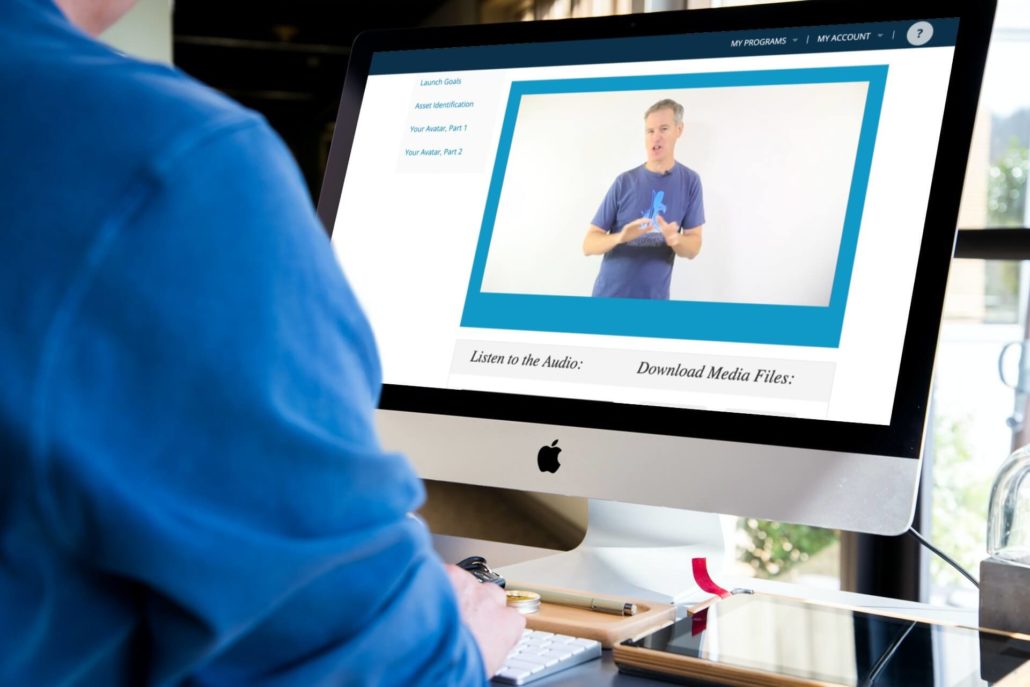

My First Course: Your Guide to Twitter
Twitter was (and still is) a platform I know a lot about. It was (and still is) a platform that is very difficult for many to understand — much less, monetize.
In August of 2014 I decided to build a course, my first course, teaching people how to use Twitter to grow their personal network.
Your Guide to Twitter was a collection of training videos, articles, and interviews that demonstrated for a novice user how to leverage Twitter to build a personal network and increase a follower count organically.
I spent over four months on this course and when it launched I raked in a cool $200 within the first month.
Pretty disappointing.
Four months for $200 was not the tradeoff I was looking for. Still, the experience was priceless as it would set me up for my second course.
My Second Course: Secret Email Marketing Society
Email marketing is not dead. Anyone who says otherwise should be cast out of your marketing circle. There may be other marketing strategies that are equally or more effective, but email marketing itself is very much alive and it works.
My second course taught the average user how to understand email marketing, how to use email in a daily, monthly, and annual way to market your business, and how to create advanced segmentations for maximum email results.
This course took approximately two months to create and I did a more thorough job of building an audience for the product, long before it launched.
Within the first two weeks of launching the course, I had made $1500 in course sales, seven times the amount I had produced on my first course.
The most exciting thing was seeing my experience from my first launch inform my second and gaining the confidence to charge more for what I knew.
Still, $1500 wasn’t the type of money I needed to create, so I needed to either sell a higher priced course or I needed to sell a lot more units of a lower priced course.
I chose the former.
My Third Course: Online Platform Launch Course
After meeting with a coach in the fall of 2015 I made two big decisions: hire my first full time employee and launch a high priced, signature course.
Jeff Walker has a concept in his PLF course called the Seed Launch where you sell a product before you create it. You tell people you are thinking about creating a specific product and if there is interest (and sales) you launch the course, creating it as you go.
This is how I produced my third course and within 5 days I sold 3 slots at $800 each.
After the initial launch I did two additional two launches and I made $30,000 in course sales — and produced numerous success stories of students who found clarity and gained traction in their online marketing strategies.
My Next Course Is Coming
Building my fourth course has been many years in the making. After battling extreme depression in 2016 I took a break from building and selling courses to focus on growing my marketing agency services and launch a new SaaS, Campaign Donut.
I have developed and refined multiple frameworks and have used those frameworks to sell over $2 million dollars in services to clients of all online marketing industries.
In the process, my team at The Blocks Agency has been developing a marketing playbook that puts marketing strategy and execution in the hands of the business owner or the business marketing director, giving every business access to agency style marketing campaigns.
Why This Matters
There are several reasons why I share these experiences.
First, I want you to know that I have lived the story. I have tried and failed at building a course. I have tried and ‘succeeded’ at building and marketing a course. I have learned numerous lessons along the way that have informed how I alter what I do in my own marketing.
Second, the lessons my failures and successes have produced translate into sales. Most recently, I was brought into a company to recover their marketing strategy prior to their biggest launch of the year.
After having worked for this company and produced large percentages of growth over two years, they hired in house. Growth halted, and even recessed.
The company brought me back in to recover before their launch and after one of their worst months of the year, we followed up with their best month EVER, helping them top a milestone they had previously never topped in seven years of business.
I know what I’m talking about and I know what type of outcome awaits you if you follow the instructions laid out.
Overcoming Self-Doubt Syndrome to Create An Online Course
From experience, I know that the transition from student to teacher, while a natural progression, will produce a certain level of self-doubt.
Whether it is fear of public commentary, judgement from others, or a concern over doing something wrong or incorrect, self-doubt is a natural emotion to navigate.
Before you allow self-doubt to take control consider this.
Pretend you are an amateur photographer. If you were out to coffee with a friend and your friend was asking for advice on how to get started with a DSLR camera so they could take family portraits, would you hold back on offering some tips and advice to help them get better results?
I believe you would be generous with your help, and maybe even offer to attend a photoshoot to help them get familiar with their equipment and show them how to take advantage of particular settings as well as lighting.
Creating a course is no different — other than the fact that now you’re going to charge $297 and offer a formalized process to help more people gain experience.
And that is the moment you will hear voices preying on fears and emotions inside your head and your heart.
Push through all of the emotion, believe you have value to offer, and begin the process of choosing just exactly what topic you will tap as your first online course!
Choosing A Topic for Your Online Course
As you choose a topic for your online course, you need to think of it in terms of, “What is an end result I can help someone achieve?”
It is essential that whatever you teach, if the person follows the instructions, will produce a specific outcome.
You cannot sell with integrity if your process doesn’t offer a promised outcome.
So the next question is, “What is an outcome I can show someone how to achieve that is valuable?” In other words, what is an outcome someone would be willing to pay for?
In my world of online marketing, here are some outcomes that people are more than willing to pay for:
- Successfully create a product launch marketing campaign
- Write, publish, and optimize ads created for a social media network
- Self-publish your own book
- Design stunning graphics for social media
- Build a website for your business to sell products
- Publish blog content that ranks on the first page of every search engine
- Film, edit, and publish videos for YouTube and increase your follower count
These are just a few of the types of courses you’ll find in the online marketing space but, obviously, these represent one industry.
At The Blocks Agency, my online marketing agency, we have clients who produce courses for various industries:
- Health and fitness
- Parenting
- Bible study
- College test prep
- Assisted living home certification
- Investor pitch for funding
- Dementia care
- Sharpening knives and edges
- Woodworking and creator
There are nearly eight billion people on earth and if you’re wondering if someone will pay for the promised outcome you have to offer, the odds are (ever) in your favor.
How much will they pay? That really depends on how valuable the promised outcome is to them. Learning how to clean a bathroom, while important, isn’t really going to help me make money or make my life that much better. Yes, a clean bathroom is nice to have, but would I be willing to pay $30 to learn how to clean a bathroom? Probably not.
Now, on the other hand, let’s say you have built a successful maid service business and you want to teach people how to start their own business, leverage cleaning strategies that are efficient and effective, and how to teach those strategies to employees… now that’s another story. That positioning has immense practical and monetary value.
So, what topic should you choose for your online course? What should your online course be about?
Here are the criteria you should consider:
- What promise outcome can I offer?
- What type of value will the outcome create?
There will be a lot of nuance that goes into answering those two questions, but at the most fundamental level, these are the two questions you want to ask and answer before you get started.
How to Create Your Course Outline
When you commit to a topic, it’s time to start drafting an outline you can follow (and any student who purchases your course, for that matter).
This is where a lot of people will overthink it the process.
If you’re good at something, good enough to show someone else how to do it, all you need to do is write down the steps you follow. Just a simple bullet point list.
Think of it as a recipe for cookies!
Create A Recipe for Online Course Student Success
All my life I had been purchasing the pre-made cookie dough from the grocery store but in my late thirties I decided that I wanted to try to bake a batch of cookies from scratch.
After finding a recipe that looked like it would help me make the type of cookies I wanted to eat (a promised outcome), I started following the instruction.
My wife was skeptical that I would actually be able to produce something edible, much less, better than the pre-made cookie dough. I felt good about the recipe I had found because the author did a great job 1) itemizing every step and 2) sharing mistakes to avoid making along the way.
In the end I made a really tasty batch of cookies that Sondra would brag about at Christmas parties. “Did you know Dave made these cookies from scratch? They’re really good.”


Here are the steps I followed:
- Preheat oven to 375 degrees F. Line a baking pan with parchment paper and set aside.
- In a separate bowl mix flour, baking soda, salt, baking powder. Set aside.
- Cream together butter and sugars until combined.
- Beat in eggs and vanilla until fluffy.
- Mix in the dry ingredients until combined.
- Add 12 oz package of chocolate chips and mix well.
- Roll 2-3 TBS (depending on how large you like your cookies) of dough at a time into balls and place them evenly spaced on your prepared cookie sheets. (alternately, use a small cookie scoop to make your cookies).
- Bake in preheated oven for approximately 8-10 minutes. Take them out when they are just BARELY starting to turn brown.
- Let them sit on the baking pan for 2 minutes before removing to cooling rack.
Pretty simple, right?
For your course outline you don’t need to do anything more complicated than this.
An Example of How to Build An Online Course Outline
If I were to create an outline sharing how to create a collection of Facebook Ads, here are the steps I would write down:
- Choose a conversion for your ad. What action do you want people to take based off your ad?
- Write five primary text messages.
- Write five ad headlines.
- Write five ad descriptions.
- Create / select 5-10 pieces of media (photo, graphics, or video) to go along with your ad.
- Visit business.facebook.com and open up your Ads Manager window.
- Create a new campaign, with new ad set and new ad.
- On ad set, click the “Dynamic Creative Ad”.
- Go into your new ad and select the Facebook Page and Instagram Profile you want to associate your ads with.
- Add the creative (text, headlines, descriptions, and media) to the ad copy.
- Go back into the ad set, configure your audience (who should receive the ads), set your budget, and click publish.
This list is pretty raw and there is a lot of additional nuance needed in order to ensure your ads are effective at converting.
But this list isn’t for your student. This list is for you! This is the beginning of your outline. If I were to refine this outline a little here is what it might look like.
- Do an overview of every element needed to create for Facebook Ads.
- Facebook Ads
- Copywriting
- Landing Pages
- Lead Magnets
- Thank You Pages
- Social Sharing Images
- Graphic Design
- Photography
- Facebook Pixel
- Share tips on effective ads.
- Show examples of effective ads
- Share effective copywriting tactics
- Best practices for text, headlines, description, and landing pages.
- Give an overview of the Facebook Ads Manager via screen share
- Provide a screen share tutorial for how to install the Facebook Pixel.
- How to install the pixel on your website
- How to install standard events on conversion pages
- Installing the pixel with Google Tag Manager
I’d continue to drill this list out, piece by piece, until I determine that, “Yes, if someone follows all these steps, they will successfully launch a Facebook Ads campaign and be able to measure their success.”
I would also include a section called, “Optimizing, updating, and improving your ads.”
This course is not promising, “Facebook Ads that produce $1 leads,” but rather, successfully create, publish, and optimize your Facebook Ads. It will be up to the student to continue to improve their skill set to operate inside the framework I build, but if they follow the framework itself, they will successfully launch their ads campaign.
Don’t over think it. Don’t get into deep elaboration. Don’t second guess yourself.
Make every step a bullet point, and as you think of new steps, sub steps, and additional details, add them accordingly.
How to Create The Content for Your Course
When you’re on a journey to create an online course, at every turn there will be obstacles to overcome, ideas to overthink, and options to sort through.
Producing the content is certain to produce concern over all three.
In this section we’re going to itemize the various forms your content can take and the quickest way you can create.
Remember, this is going to be your first time going at this process so be willing to give yourself a break and prioritize getting something made that you can improve upon over getting something done ‘perfectly’ that you will inevitably have to improve upon as you learn.
Audio Content for Your Course
If you lived through the late 60s, 70s, 80s, or early 90s you may remember the phenomenon of the motivational tape set. Whether an audio version of a bestselling book or a collection of tapes recorded from live speaking event, tape sets were representative of the early day online course.
Tapes have come and gone but audio is a timeless format and it is worth considering as you explore creating your content.


Audio is a format that offers a lot of benefit — even if it is just an audio only version of a video course you recorde.
Here are a few ways you can leverage audio in course content.
Audio only version of a video recording — You may choose to record your online course content as a video training. Video is a great format but there are several drawbacks. First, video uses a lot of data and your students may want to download or stream your instruction when they are away from their house. Making an ‘audio-only’ version of your video gives students a way to save lots of content to their device without taking up enormous amounts of space or stream your training using cellular data without using up their monthly data plan.
Conference calling training events — You may want to offer live training but aren’t really excited about the idea of being on video the entire time. Likewise, your students may want to learn in a live experience, but don’t really want to be on camera in front of strangers. Using a conference calling service that allows for users to dial in to join the call gives you an opportunity to leverage audio in a formalized way. Conference calling services will also record the calls, allowing you to provide them as downloads later.
Paid podcast episodes — Podcasts have become a mainstream way of delivering content to consumers with regularity. While paid podcast subscriptions have been around for over a decade, they have only become mainstream in the early 2020s. You can produce your course in a podcast format and upload each section as an episode in a podcast. From there you can direct students to become paying subscribers via their listening platform of choice.
Sell individual sections as mp3s using a shopping cart — You can file this under the heading of ideas for selling, but rather than bundling all your content together, you could choose to sell individual sections as mp3 downloads and use a product like SendOwl to handle the distribution.
Video Content for Your Course
YouTube and Vimeo were two early streaming providers that offered affordable (or free) video services to consumers. In addition to making video an affordable medium, YouTube and Vimeo also gave privacy options allowing users to control who had access to a particular video.
Since then, YouTube and Vimeo are still two of the larges video storage and streaming services with the company Wistia joining their ranks. These three services (plus the countless additional services that exist) make video a highly viable method for delivering your course content.
Here are a few ways to leverage video for your course.
Record a slideshow presentation — Your videos don’t have to be a recording of your face speaking. You can very easily create a presentation with individual slides, using the content on each slide as a prompt for each video topic. Lots of tools will allow you to record your screen and microphone and even give you some basic video editing tools allowing you to set in and out points as well as chop out points of your video that shouldn’t be included in the recording.
Record your screen (whatever is on it) — Jeff Walker’s Product Launch Formula is largely Jeff standing in front of a white board drawing out models for how the framework is to be executed. However, in one video Jeff shares his computer screen showing a mind map he created and just scrolls around on his mind map as his presentation, explaining each section as he goes. You don’t need a formal presentation, you could even record your iPad screen and use your Apple Pencil to diagram your content as you go. Just know what you need to say and then record yourself saying it.


Zoom style video calls with everyone attending live — Having an interactive audience can make teaching a lot easier, providing prompts for you to teach off of, rather than having to come up with 100% of the content ahead of time. If you have a great system, little time, and want to make money right away, creating a course outline and then delivering the content during live Zoom calls will allow you to live in the moment and get real time feedback from your students.
Talking head style videos — This is typically what most people think of when they consider creating videos for their online course. A webcam connected to the computer and recording themselves talking through the content. This is definitely one way to create your content and for some people it can be a very effective way of conveying information. There is more to account for with this method such as lighting, setting, equipment, and personal appearance. The best way to approach these videos is to record in a location with good lighting, use a decent webcam, minimize distractions in the background, and don’t try to compete with professional productions.
Professionally produced videos — At this point you should avoid investing too much into professional services, not because it wouldn’t be worth it (though it wouldn’t be), but because your course content will change and you’ll get better at delivering it over time. There are plenty of gurus out there who will invest thousands of dollars into their production, you don’t need to. Avoid trying to compete with people who have been doing this longer than you who are investing more money than you have to spend.
Written Content for Your Course
Video and audio get all the attention and for good reason. But don’t discount written content for your course. From extensive research documents all the way to full transcriptions of any audio / video teaching, there is a place for written documentation. Not only is written documentation another way of conveying information but it will also connect with those students who absorb content through reading verses watching or listening.
There are many different ways you can leverage written content and here are a few for you to consider.
Create a written transcript of every training video or audio track — Creating a written transcript of your content is easier than ever before! Many online courses use an online transcript as an alternative way of delivering content, but they also leverage it as a bonus customers will get for signing up! Using a services like Rev.com makes creating a transcript easy. It typically costs $1 per minute for a quality transcription, but it’s well worth it if your course is a higher priced item and you can use it as a way to make your course more attractive to your audience.
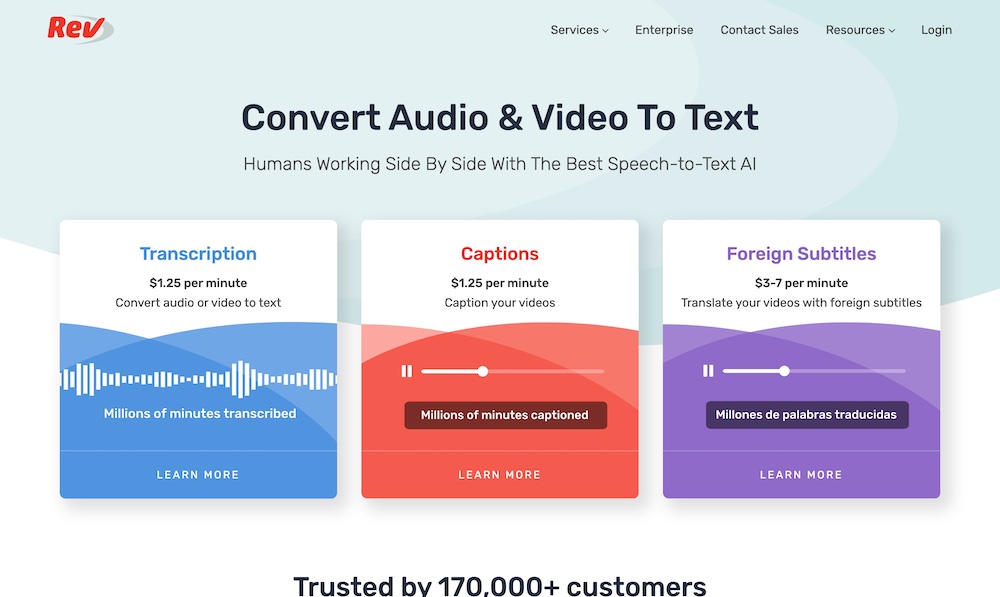

Deliver your online course as a newsletter — Good newsletters are note dead and you can use this format to deliver your content. Whether you deliver by mail or via email, creating a series of written newsletters gives you an opportunity to differentiate your course from others. If you go with this format it needs to truly be a newsletter that is head and shoulders above anything else that is out there with a rhyme or reason for pursuing this delivery model.
Written articles to compliment audio or video material to add value — In addition to having your video or audio content available, use written materials to convey different information, such as worksheets, articles, ebooks, and checklists. This could also be downloadable slideshow presentations, as well.
Don’t Overthink Your Online Course Content Delivery
No matter how you deliver your content, there is going to be a temptation to make it perfect upon first try.
- Your first time teaching the content will be the worst you’ve ever taught it.
- Your students will give you valuable feedback that will inevitably change your content & delivery.
- Your knowledge will increase overtime and you will change the course drastically over time.
- Your standard of perfection is not THE standard of perfection. Done is better than perfect.
There are people who needed your course yesterday. They don’t resonate with the gurus, they haven’t found a personality they can trust, and they’re waiting for someone to speak their language.
You’re that person.
However you deliver your content, the overarching value on delivery should be minimize distractions.
Publish it as a word document, don’t worry about getting it illustrated.
Just make sure the document is well-formatted. Upload the video, don’t worry about the green screen and overlay effects. Just make sure your audio is good (so they can hear you) and your lighting is decent enough to where it’s not a distraction.
Minimize distractions and get the content published!
Creating Your First Draft of Course Content
With your outline in hand and your format decided, it’s time to create your first draft.
There isn’t a one-size-fits-all process for making this happen and a lot of it will be determined by what type of format your course will take.
Written.
Video.
Audio.
Screen share.
Other.
However, there are a few guiding principles that you should keep in mind.
Don’t Create Your Content Alone
You are the person best qualified to come up with your course content — you’re the expert (yes, you really are). Still, your potential for impact has a lid on it. The only way to increase the quality of your content beyond your own potential is to invite other people into the process to help you develop the content, review the content, critique the content, and offer edits.
As you draft your first video, send it to a trusted friend or colleague to critique. Ask them to give you feedback that you can use to improve the delivery.
You may not use all of their feedback, but you will definitely find some of it to be insightful and as a result your course will automatically increase in quality.
Just Get It Done and Ship It
This is not the last time you will create content — as a matter of fact, if you’re reading this article it will probably the first or second time. You will have plenty of opportunity to edit later, but right now your attention needs to be on creation.
Creating something from nothing is typically much harder than reacting and responding to something.
Meaning, it would be easier for you to do a live Q & A with students because you just react and respond to their questions.
But creating, that requires forethought, anticipation, and intentionality.
Look at this first effort as just a creation effort. After you’ve completed your first draft, now you have something to react and respond to and at that point it will be easier to modify and update.
You can’t sell something that isn’t complete — so get it done, sell it, and update it as you go.
Don’t Get Distracted By Shiny Object Syndrome
Overcoming self-doubt is challenging enough. Becoming distracted by new ideas, new tools, and new opportunities will be a challenge unto itself.
As you move further into the process of creating your online course you will begin to notice what other online course creators are doing and become interested in what tools they are using to create.
What other people are use can inspire and direct, but it should not dictate the direction you decide to go with your online course — be it the content or the tools.
The tools you use will not make or break the content. The tools will only amplify the chaos or the clarity of your course. Right now it’s important to put all of the tool talk aside and focus 100 % on your course content.
That said, you will need tools to create your course so it is best to pick a tool (typically free is the best to start with) and move on from there.
Here are some recommended tools you can use to create your course content.
Recommended Tools for Creating Your Online Course
There are several categories for online courses and online tools.
You’ll need tools to create your content, tools to sell your content, tools to deliver your content, and tools to manage your content.
My entire toolbox of recommended tools is available here. The list in this section is focused on tools to create your content.
Creating Slideshows
If you’re going to create a slideshow and use that as your primary means of teaching for some or all of your content, here are the apps you might want to consider.
Google Slides — There is really no better tools for creating a simple slideshow that works on any computer, in any browser, and is backwards and forwards compatible. In addition, you can easily download your presentation as a PDF, PowerPoint file, or HTML package. On top of that, you can embed your presentation inside any website page as well. Google Slides is my choice for slideshows.
PowerPoint — If you’re familiar with PowerPoint and Microsoft office, this may be the right choice for you. There are a lot of great features that come with PowerPoint that can add a special flare to your presentation. I mention PowerPoint, not because you wouldn’t think of it, but to validate that it’s okay to use.
Keynote — Of the three main presentation apps (Google, Powerpoint, and Keynote) Apple’s Keynote app is probably the app most suited for sexy presentations. The simplicity of the app and the built in slide effects make this a great recommendation if you want to add special effects, motion, and movement to your design. There are a lot of compatibility issues with Apple Keynote. It’s not compatible with Windows, older presentations will not be compatible and will require you update the presentation to be compatible with even the slightest change in Keynote version. Still, if you’re familiar with it, using it is not a bad idea.
Mentimeter — While I have never used Mentimeter, I was thoroughly impressed with Mentimeter. My wife and I participated in a parenting course with Deborah Gilboa, MD (Ask Doctor G) and during her presentation she used Mentimeter for her presentation. What made Mentimeter unique was that my wife and I got to use our phones to influence what showed up on Dr. Gilboa’s screen. In other words, the presentation was interactive. If you’re going to present your information live (virtually or in person) adding an interactive element like Mentimeter could really elevate the engagement you receive from your participants.
Miro — Miro is less a presentation tool and more of a collaboration tool — with presentation features built in. Miro bills itself as an online whiteboard and it could really suit your presentation if you decided to go after a Jeff Walker mind map type of presentation. Miro is great because it is a creation and presentation tool built into one and could really help streamline your process for building a course presentation.
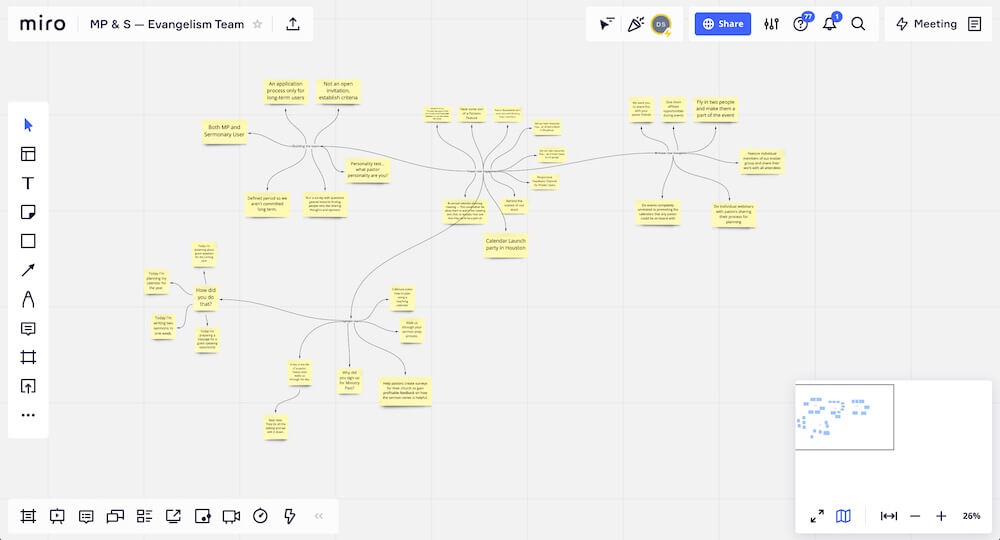

Prezi — Prezi is another presentation tool that continues to take the presentation beyond PowerPoint, Google Slides, and Apple Keynote. This is another tool that offers simple slides but enhances the way that presentation information is communicated with robust transitions, strong design tools, and additional media options for sharing.
Recording Your Screen
You should have zero problem finding a screen recording application that works for you. What’s more, you shouldn’t have any problem finding one that works for you and is free.
At this point, I recommend getting a simple screen recording app that will record your screen, webcam, and microphone and then allow you to export it.
Here are a few recommendations for you to choose from.
Loom Video Messaging — Loom is probably one of the top-three browser based video recording apps available. If you spend much time collaborating online for work there is a good chance you’ve seen a Loom video. Loom has a free plan that is generous, but there is a five minute limit to videos. If you want to record longer videos you can sign up for one of their monthly business plan and when you’re done recording and have downloaded all your videos, you can go ahead and cancel if you want to avoid paying further costs. Check out Loom.
Wistia Soapbox — Wistia Soapbox is a completely free video and screen recording service. This has been my video recorder of choice for quite a while, specifically because of how simple it is. While I would not record my entire course using Wistia Soapbox, it wouldn’t be because it’s not a good app. I have paid for Telestream’s Screenflow app which offers pro features you wouldn’t be able to find inside of a recorder like Wistia (or Loom, above). Soapbox free does not allow for you to download your videos, which might be a problem if you want to do anything other than share the video directly from Wistia. You will need to share the actual link to your Soapbox video, making the videos only viewable on the Wistia website. If you’d like to unlock downloads (and more features) you can pay for a Soapbox annual account. Check out Wistia Soapbox.
QuickTime for Mac — If you use a Mac computer you have a screen recorder built in to the computer. Apple’s QuickTime for Mac allows for you to record your screen and your microphone at the same time. You can record your entire screen or you can choose to record only a selected section of your screen. It’s a great screen recorder that allows you full control over what you record including portions of your screen, recording length, and exporting to various formats. You won’t find any special effects like zooming in and out to portions of the recording or adding text over your video, but you could achieve this in a post editing session. I highly recommend QuickTime for Mac if you’re using an Apple computer. QuickTime included with your Mac.
ScreenFlow for Mac — I am a Mac user and, as already mentioned above, ScreenFlow for Mac is my screen recorder of choice. If I am recording a tutorial video or training video I will bypass browser based recording options (like Loom or Soapbox) and go straight to ScreenFlow. ScreenFlow is a true professional screen recording application, and as such, is not a free option. Telestream is a $149 purchase price and 100% worth it if you record lots of screen tutorials and screen sharing trainings. I won’t go into all the features of Telestream’s ScreenFlow, you can learn from their website. I will say that I love how easy it is to create zoom points on your screen so that during your recording the video will zoom in on a specific portion of your screen and then set a second point to zoom out. It is a nice little animation that makes editing your video easier, and ads a level of polish you won’t get with any of the previously mentioned solutions.
For Your First Online Course, Keep Everything Simple
One of the risks in evaluating so many tools is your process can get complex quickly. Instead of focusing attention on creating amazing content, your attention is focused on how to make content look amazing.
Great content shines regardless of the technology used to present it. Great technology is only as effective as the content being communicated.
Focus your time, attention, and energy on making a great course. Use technology to up the wow factor later on in the process.
Recommended Equipment for Creating Your Online Course
Honestly, I’m hesitant to even include this section because you don’t need much. If you have a computer with a microphone and webcam you have all you need.
Here is why I am including it…
Almost anything will be better than the microphone and webcam included with your computer. For under $200 you can drastically improve the quality of your media.
Instead of sharing different options, I’m going to give you one option.
Logitech C920 Webcam
The Logitech c920 Webcam is the gold standard for starter webcam upgrades. If I had a limited budget, a terrible computer webcam (which they all are), and was going to do anything with video of myself in conjunction with my computer screen, I would get this webcam.
You can use your phone, too. If I wasn’t going to do anything with my computer screen, the phone is good.
You can get the Logitech c920 from Amazon here using my affiliate link.
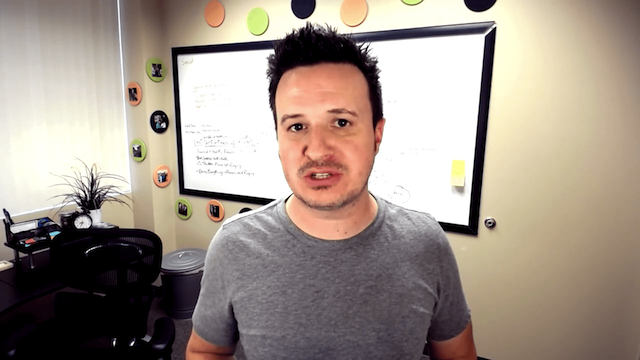

Rode NT-USB-Mini Microphone
Just about anything Rode is going to be great. And any microphone other than the built in microphone on your computer is going to be an upgrade.
Your audio is much more important than your video… think about it… if the video looks incredible but the audio is distorted, too low, or even too high and constantly peaking you’ll turn it off. Vice versa, if the video is terrible but the audio is intelligible, you’ll ignore the video.
I use the full size Rode NT-USB microphone, but they do have a lower profile mini microphone and that’s what I’ll recommend for you. This microphone with the webcam mentioned above should come in under $200. A small investment to greatly increase the quality of what you do.
You can get the Rode NT-USB-Mini Microphone from Amazon here with my affiliate link.
What to Expect While You Create Your Online Course Content
You’re the expert about your topic, so you’ll be the best person to decide what needs to be include, where it needs to go, what needs to be said, and how to convey that message.
Here are a few tips to consider as you create your content.
You Can Correct Later
Nearly anything you create will be exactly what your people need. Unless you made a mistake that greatly impacts your student’s ability to achieve the promised outcome, just keep going. You can correct mistakes later.
When you do make a correction, you can amend the presentation, cut a portion of the presentation out and add a new section, or just let it ride if it’s just cosmetic.
This is your first draft… your first try… you’ll get better at presenting your content overtime and will be much more equipped to create new versions down the road.
Get Feedback from the Right Person
You’re going to be tempted to share your content with friends and family. That’s fine… just don’t take what they say too seriously. Not that you don’t value them or their opinions, but unless they’re in your industry and are potential students, they won’t be informed enough to give you valuable feedback beyond, “It looks good,” or, “I don’t like the background.”
Maybe it does look good… maybe the background isn’t ideal. What you really need to know is, “Is this something you can track with and follow?” and if they can’t answer that, their feedback really isn’t all that helpful.
Find people in your industry or niche and ask them to review the content and provide any feedback they can.
You are looking for criticism. Positive comments are great and help you know what to continue doing, but criticism is what will make you better.
Get constructive criticism from someone in your industry. Their feedback will be huge!
Get the Content Recorded Before You Start Creating Logos, Graphics, and Fun Stuff
Take this piece of feedback with a grain of salt. Many people are able to do the ‘fun stuff’ of designing the branding for the course WHILE creating the course content.
Unfortunately, I am not.
I get so excited about the branding, marketing pages, and overall launch strategy that the progress of my training content suffers.
Full transparency, it actually is great to multi task and market your course while you create it… if you can manage it. If you have to choose one, choose to create the content and once it’s done, then start marketing.
Positioning Your Online Course
There are two incredibly important items to get right before you market your course… the title and your messaging.
Graphics are great, video effects are fun, email copy is important, but the success of everything hinges on your messaging and how you title the course.
Truthfully speaking, the messaging and title represent the branding of the course and the third piece to complete your branding is not the logo… it’s the price.
The messaging, title, and price will position your course.
Your Online Course Messaging
How you describe your course (in person or over a screen) will be vital to the success.
What are you promsing?
What will someone be able to achieve after completing your course?
How will someone feel after they complete the course?
How would you help someone visualize themselves on the other side of the course completion?
Why haven’t people been able to succeed in the past and how is this experience different?
What are some barriers that the person will need to push through and how will that feel?
The clearer you can be with your course description, the easier it will be to explain to someone. Donald Miller’s “Building Your Story Brand” is all about clarifying your message and is a GREAT resource for helping you answer these types of questions above.
Your Online Course Title
The title you choose for your course should be a promised end result. That’s it.
If your course is about teaching dads to bake chocolate chip cookies you could title it, “Dad’s Unbelievable Cookies.” This title tells us who it’s for, what they’re making, and gives a promise.
I did a mini-course for customer who asked for help using automation tools. I titled the course, “Get More Done Now.” I think I could have done better on the title if I had given it more time… but overall, it described exactly what automation would help them achieve… get more done.
Honestly, the best course title will not be something you come up with on your own, but rather, it will be a team effort. Get a few other people in the room with you and work on the messaging and title as a collaboration exercise.
You are limited by your own knowledge, expertise, and experiences. When you put more people in the room (the right people, mind you) the lid on your capabilities is removed and the sky becomes the limit.
Pricing Your Online Course
Go high.
You’re going to be tempted to undervalue your course. Whether it is because of a false humility, lack of confidence, or a result of abuse in your past. You may believe your course is a $2000 course, but for whatever reason you will price it at $97.
There are two different ways you can come up with your course price.
The first way is to look at what your competitors have charged for a similar course. Align your course price with the higher end.
The second way is to consider the type of income someone will be able to make leveraging what you teach them in your course and use that as a starting point for your course.
Going back to our example of dads become amazing bakers, this is more of a life fulfillment thing. It’s not a life changing amount of money — but it allows someone to check off an item on their bucket list. That’s valuable.
I might encourage you to have an end target of $197-297. For people who pre-order they get the course for $97. That gives you a great discount for people to get in early but a nice chunk of change, a premium chunk of change, when you consider the cost of a cook book and free videos on YouTube.
Let’s take the example of our cleaning business course.
Someone who actually uses the course content to launch a business and generate an income, that’s a really nice end result and will most likely result in a five-figure level of income.
Your course is probably worth $2,000 if you cover everything from the techniques, to the business side of things, to staffing, to scheduling. Maybe aim for $2,000 and do a pre-order of $897. That allows you to say, “Get over 50% off the final price when the course is launched.
Finding Your Online Course Audience
If you have an email list, you already have your audience. These are the people who have shown interest in what you do in the past and will be the best group of people to let in on what you’re doing in the future.
If you do not have an email list, not to worry, you still have a lot of potential lead sources.
Here are some suggestions for building an audience to market your course to.
Every Email Address You Can Find
Here’s the deal — not everyone you know will be a perfect fit for your course. It actually may only be a small percentage who would be the ideal student.
But you’ve got a great collection of friends, colleagues, and contacts. You’re a servant, you are always giving to others, you have built up a log of good will, and, dog gone it, folks like you.
You have a lot of good will built up that you can now tap into.
Go through your email inbox and copy every email address from every relationship you have into a spreadsheet. You may wind up having 500-1000 emails when is all said and done. Maybe 5-10 of these folks will actually be interested in your course. The rest won’t be interested in your course, but they will jump at the opportunity to help you succeed.
You now have an email list you can launch to and unleash your network to help you make your online course launch a success.
Contact Every Social Media Contact Who Is A Great Fit
You, no doubt, have connected with individuals through social media who are interested in the topics discussed in your course. As yourself, “If Barb goes through this course, will it help her create a better tomorrow?” If the answer is yes, you need to reach out to Barb.
Go through your Twitter followers, your Facebook friends, your Instagram followers, and your LinkedIn contacts looking for individuals who are an ideal fit and when you find one, send a message to them.
“Hi Bill, Dave here! Hope you’re doing well. I’ve been working on something for dads over the last 3-4 months to help them better connect with their kids. I know you’re always doing fun activities with your kids and wanted to let you know if you’d be interested in a week long activity with your kids around baking. I’m trying to put together a small group of about 10 dads I can lead through this memory making week. It’s not free, but it’s affordable, and will be something you can create a family video doing, looking back on it years later and smiling with your kids around the. Could I share more information with you?”
That’s all the information you want to share, but it might be a bit much for the first message. Here is how you might word the first message and then follow up with the details.
“Hi Bill, Dave here! I am hosting a week long dad / kids baking adventure. When I was thinking of people who love making memories with their kids doing new things, I thought of you. You intrigued??”
That’s all you need to do! Some people will say yes, some people will say no, some people will ignore you, and some people will wish you well. Very few people, if any at all, will actually give you a hard time for contacting them. The bottom line is you can unlock 20-30 contacts using this method who will be honored you contact them individually.
And here’s the thing — they may not be ready to purchase right now but you’ve put what you’re doing on their radar. As you market your course more publicly, they will take note and begin to wonder more about it and eventually, they’ll reach out.
I talk about this concept of being patient in the episode below of my podcast, The Donut Shop: An Honest Conversation About Online Marketing. Check it out — lots of great stuff in this episode about campaigns that convert.
Reach Out to Colleagues with An Audience In Your Industry
Speaking of podcasts, this is a great way to leverage the audience of others and promote your course to a collection of listeners who may have never hear of you.
Podcast hosts and live event hosts are always looking for quality guests.
You are that quality guest they want!
Find their podcast page and look for information how to become a guest on their show. Follow the instructions, make it clear what value you can provide their listeners. When you get booked they’ll ask you, “What would you like to share,” and this is a great opportunity to talk about your course.
Of course, podcasts aren’t the only medium you can leverage, just an really obvious one.
Here are some additional mediums you can consider:
- Reach out to colleagues whom you have a strong relationship with and ask them if they would consider promoting your course experience to their audience.
- Reach out to any past customers of other ventures and let them know what you’re doing now. They will be interested to hear at the least… qualified to buy at the most!
- Contact any individuals who used to be in your industry but aren’t really active anymore and ask them if they’d be willing to contact their email list on your behalf.
Bottom line, you have a lot of resources at your disposal… you just have to be willing to look for them.
Not everything I suggested will be a good idea for you — especially if your course is unproven. It might be that you want to do a dry run with a few trusted folks first and get some feedback before tapping into all of the resources at your disposal.
The point here is to recognize that you’re never starting from 0. You have a huge collection of assets if you’re willing to look.
Creating and Email Marketing Plan for Your Online Course
Before I go any further regarding email I want you to know that email is not dead and that email marketing is your single greatest marketing tool available.
Selling your course will require a marketing campaign plan and if you want your campaign to convert, you will need to use email effectively.
If you believe you’ve tried email marketing before and it didn’t work for you, I will submit that you did it wrong. It was email that failed you, it was you that failed in producing an email marketing plan.
Why? Because it’s still working for everyone else.
So with that out of the way, there are three phases to your email marketing that you need to incorporate into your plan.
Phase One: Pre Launch Emails
The first collection of emails you need to draft are your pre launch emails. These emails are not about your offer, they’re not about your product, and they’re not about anything other than offering value.
I’ve mentioned Product Launch Formula a couple times already in this article and it’s because Jeff Walker has mastered so much of this process. Here is a rough process of how it works…
In your first email you raise a question, answer the question, and then pose a new question that you’ll answer in your next email.
In your next email, you restate the question you left off, answer that question, pose a new question, and let the reader know you’ll answer the new question in the next email.
You do this all the way until your last email where you say, “and this is the question we answer in our product.”
You’ve provided immense value to your audience, they are already headed in the right direction, and if they want to finish things out, they need your product.


If you like this format, get Jeff Walker’s book, Launch. This is one of my recommendations included in my list of online marketing books that are awesome for entrepreneurs to look into.
Phase Two: Your Launch Email Content
This collection of emails is all about delivering and promoting the offer to your list. Here is the typical flow for this email sequence that I will use when running launches for myself and for clients.
- Email 01: Offer is available
- Email 02: Here are the bonuses
- Email 03: Answer objections
- Email 04: Testimonials
- Email 05: Highlight a specific bonus
- Email 06: What to expect
- Email 07: Offer expiring
- Email 08: Last day
- Email 09: Last call
Again, this is just a typical launch sequence and I will adjust it to the product being offered. But as a starting point, this is where I begin.
This sequence performs best when it has followed up the the pre launch sequence, building up credibility, authority, and excitement for your offer.
Phase Three: Follow up
Admittedly, this is not a phase I handle very well because it is the least exciting phase — but it is very important.
Your followup sequence doesn’t need to be lengthy, complicated, or about your offer. What you send really depends on what you have going on in your business and what you’re doing next.
One of my more recent campaigns was promoting an offer tied to a new collection of annual calendars being released. After the offer expired, the calendars were still available — just not the offer we used for their launch.
There were 6 calendars in total and the follow up sequence was initiated a week after the launch sequence completed.
We sent six total emails. One sharing a summary of every calendar available. Four individual calendar highlights (each one highlighting a different calendar). A final single email highlighting two of the lesser used calendars.
This followup sequence continued to produce sales and free trials even though the larger offer had expired.
How to Send Your Email Sequences
You will need an email service provider to send all these emails (unless you intend on using your personal email account to run your offer, which I don’t recommend).
There are three services that I will recommend.
For dirt cheap (to free) and very basic functionality, I recommend Mailchimp.
For a prosumer option, I would recommend ConvertKit.
For a pro option with lots of capability and room to grow, I recommend Drip.
Taking Payment for Your Online Course
When it comes to taking payment for your online course there are almost too many options to keep straight.
You can invoice clients using Fresbooks or Quickbooks. You can ask them to send via Paypal. You can use a shopping cart provider like ThriveCart. You can use a payment integration on a landing page provider like Leadpages. You can even setup a store like Woocommerce or Shopify and create a product.
The point here is that getting paid has never been easier.
If you are just starting out in online marketing I recommend using a Paypal to get paid. Whether that is starting a simple website and installing a button, sending an invoice, or using a Paypal link.
If you are just starting out but really do want something more than a Paypal button or link, I love ThriveCart. You can create a legitimate sales page with sales form. ThriveCart will integrate with Paypal and Stripe making it easy to get paid. If you are in it for the long haul it’s a great investment.
The choice for what system to use for taking payment has mostly to do with how much involvement you want to have with each individual transaction. The more setup on the front end, the less involvement you’ll have with each transaction. The less setup on the front end, the more involvement you’ll have with each transaction.
Delivering Your Course Content to Customers
I am ashamed to admit that I spent a lot of money on delivering my course content to zero customers. I am a productivity tool junkie and I put too much attention on the process way too soon as I built my first product.
As I was building my first course I was exploring what tool I would use to deliver the content and at first I settled on a a WordPress plugin. Instead of focusing my time and attention on building out my content I diverted my attention to learning the course plugin settings. I spent a few hundred dollars over several months and decided it wasn’t for me.
Then I moved to a course service and spent about $600 ($100 monthly) for my Twitter course which wound up producing about $800 in sales.
All this to say, don’t get distracted like me – and don’t waste money like I did.
Here are three membership options you can lean on for delivering your content.
All three are good — and I recommend you avoid all three of them. Why? Because you don’t need to spend money on this right now.
Delivery Your Content via Google Drive or Dropbox Folder
If you want to use free tools available, Google Drive and Dropbox both have free options for storing and sharing content.
What you want to do is create your content (docs, videos, or audio files) and drop them into a single folder, naming them appropriately. Edit the folder you placed them in and grant permissions to share with anyone.
When it’s time to deliver content to your customers, you can send an email to everyone who purchased with a link to your shared folder. When they open up, they will find the course materials, named in such a way that they can follow the order easily.
You can add all the content at the beginning or you can add content slowly (known as dripping content) as they progress through the course.
The risk many fear is that people will share the materials with those who haven’t paid. It is understandable. However, in reality it is very safe. You are pricing your content high enough that it will eliminate many low-end customers. Low-end customers tend to be the loudest complainers and the ones most likely to illegally share your content with others.
Higher-end customers tend to respect their own investment. Not always, but typically. They may share one or two pieces of your content as a ‘taste’ to someone else, but they’re not going to undermine their investment and give stuff away to other people.
As a matter of fact, I’ve shared course content with others. “Hi there, you and had been talking about this last week. In Jeff Walker’s course he went through it all in detail. Here is the worksheet. I strongly recommend you take the course. It will be really valuable to you.”
Finally, you can set in your terms and conditions that users may not share content. This is just a small detail that gives you some protection if someone does choose to upload your content somewhere it isn’t supposed to be.
I fear I’ve written too much about it being safe to share your content via Dropbox or Google Drive, undermining just how safe it is. Truthfully, you’re right to be concerned, but you have nothing to fear.
Deliver Your Content via Private Page On Your Website
If you have a website, this is a very easy way to create a nice experience for your customers without spending any money.
Create a page on your website, but make it private — assigning a password to prevent unauthorized use. When you send emails to your customers letting them know content is available, share the password with them.
Using a page on your website allows you to organize content really nicely, placing videos as embeds, creating buttons for downloads, and using headings to break up sections of your course.
Perhaps you’re savvy enough with your websites to create multiple pages and link to each of them from a main dashboard. That’s fine, too. The main point is to keep things easy, not spend money, and keep your content centrally located so your customers have an easy time accessing their purchase.
Leave An Impact On This World with Your Course
While there is a lot to say about creating an online course, the most important message that should break through any and all of the noise is to just get started.
Creating an online course is a way you can leave an impact on the world. So many of us settle for getting paid through what we do. Creating an online course and selling it is you deciding to get paid for what you know.
When you finally get paid for what you know it helps you increase your income and it puts your knowledge in the hands of others who are ready to achieve a goal they’ve put off for far too long.
You Are the One Responsible for Your Platform
The biggest obstacle I’ve observed that prevents people from creating their online course is putting off the creation of the content in favor of exploring the tools, the delivery mechanisms, and anything other than creating the content.
The second biggest obstacle I’ve observed preventing people from creating their course is pinning responsibility of the course’s success on someone else.
You are the one responsible for your course’s success. You are the one responsible for the content, the marketing, the delivery, and the follow up.
And just like you are not responsible for the results of your students, no one else is responsible for your results other than you.
The best day to create an online course was yesterday. The next best day is today!
Put the excuses to bed, set aside time to get to work, and complete something that will change someone else’s world for the better!


